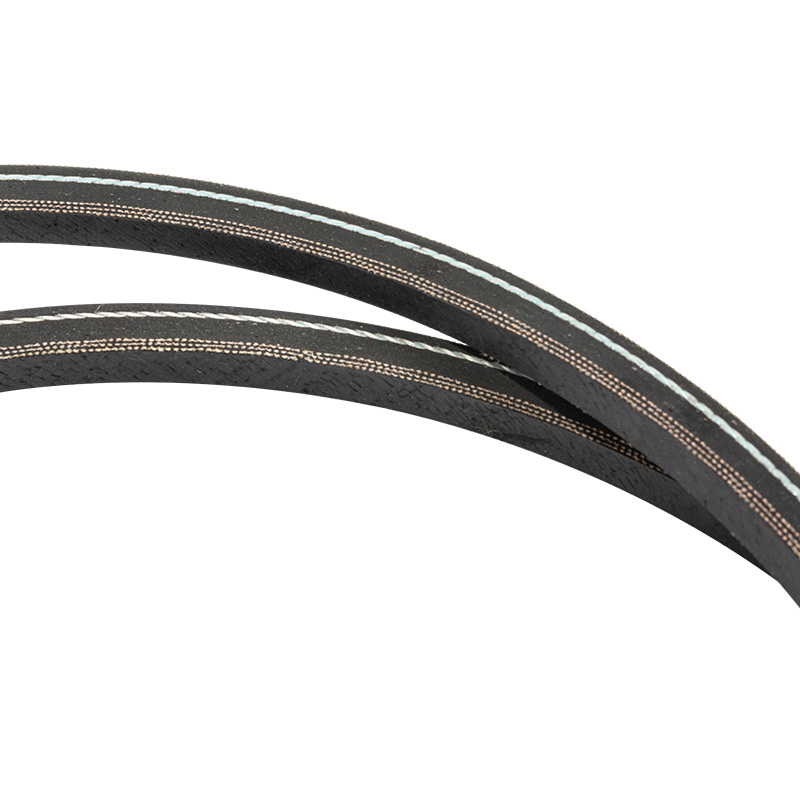Enhanced Grip: The raw edge design of Automotive Raw Edge V-Belts is engineered to optimize the contact area between the belt and pulley surfaces. By increasing this contact area, these belts effectively enhance grip, ensuring a stronger connection between the belt and pulley. This is crucial during heavy load conditions and sudden speed changes, as it minimizes the risk of slippage, which can lead to power loss and decreased efficiency. The enhanced grip provided by Automotive Raw Edge V-Belts translates into improved overall performance and reliability of automotive systems, particularly in high-stress situations such as towing, hauling heavy loads, or aggressive driving.
Reduced Slippage: The design of Automotive Raw Edge V-Belts significantly reduces the likelihood of slippage between the belt and pulley, even under extreme conditions. This reduction in slippage ensures that power is transmitted efficiently from the engine to the various accessories and components, such as the alternator, water pump, and air conditioning compressor. By maintaining a firm grip on the pulley, Automotive Raw Edge V-Belts minimize energy losses associated with slippage, resulting in more efficient operation and improved fuel economy. Reduced slippage helps prolong the life of the belt and pulley system by minimizing wear and tear on these components, ultimately contributing to lower maintenance costs and increased vehicle reliability.
High-Tensile Strength: Automotive Raw Edge V-Belts are constructed using advanced materials with exceptional tensile strength properties. This high-tensile strength allows the belts to withstand the significant forces exerted on them during heavy load conditions, such as sudden acceleration or towing heavy trailers. By resisting stretching and elongation, Automotive Raw Edge V-Belts maintain their integrity and dimensional stability, ensuring consistent performance over time. The high-tensile strength of these belts enables them to operate at higher belt tensions without risking failure, further enhancing their suitability for demanding automotive applications.
Flexibility: Despite their robust construction, Automotive Raw Edge V-Belts remain remarkably flexible, allowing them to conform to the varying shapes and contours of pulleys with ease. This flexibility is essential for accommodating fluctuations in tension and speed that occur during sudden acceleration or deceleration. By adapting seamlessly to these changes, Automotive Raw Edge V-Belts minimize stress on the belt and pulley system, reducing the risk of premature wear and fatigue. The flexibility of these belts facilitates smoother operation and quieter performance, enhancing the overall driving experience for vehicle occupants.
Heat Resistance: Automotive Raw Edge V-Belts are engineered to withstand the elevated temperatures generated by prolonged operation or heavy loads. The materials used in their construction are carefully selected for their heat-resistant properties, ensuring that the belts remain stable and reliable even under extreme conditions. This heat resistance prevents the belts from softening, cracking, or glazing, which can compromise their performance and longevity. By maintaining their structural integrity at high temperatures, Automotive Raw Edge V-Belts ensure continuous power transmission and minimize the risk of unexpected failures, thereby enhancing vehicle safety and reliability.
Epdm Rubber Automotive Raw Edge V-Belts




 English
English 中文简体
中文简体

 View More >>
View More >> View More >>
View More >> View More >>
View More >> View More >>
View More >> View More >>
View More >> View More >>
View More >> View More >>
View More >> View More >>
View More >> View More >>
View More >> View More >>
View More >> View More >>
View More >> View More >>
View More >>
